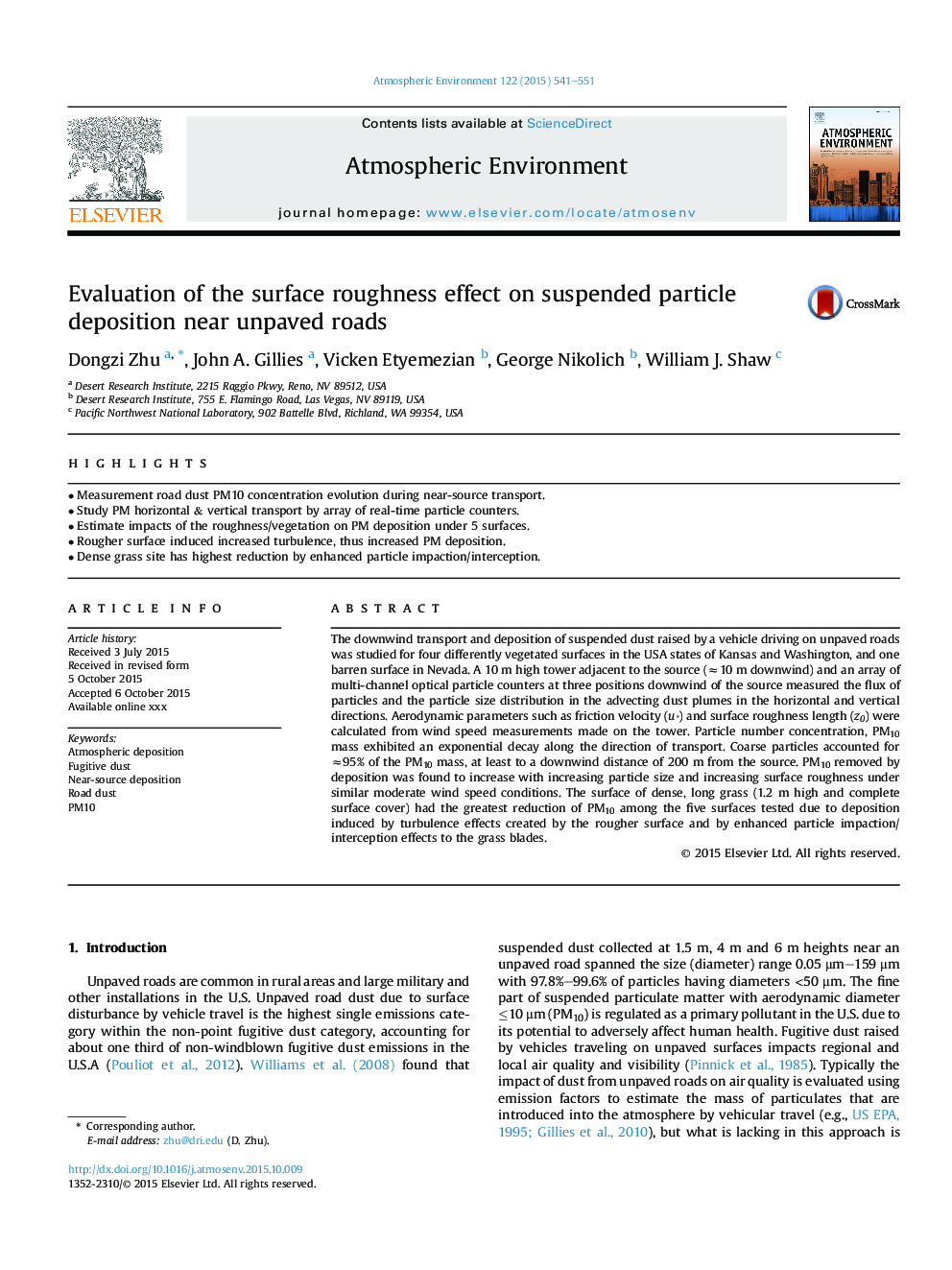| Article ID | Journal | Published Year | Pages | File Type |
|---|---|---|---|---|
| 6337057 | Atmospheric Environment | 2015 | 11 Pages |
Abstract
The downwind transport and deposition of suspended dust raised by a vehicle driving on unpaved roads was studied for four differently vegetated surfaces in the USA states of Kansas and Washington, and one barren surface in Nevada. A 10Â m high tower adjacent to the source (â10Â m downwind) and an array of multi-channel optical particle counters at three positions downwind of the source measured the flux of particles and the particle size distribution in the advecting dust plumes in the horizontal and vertical directions. Aerodynamic parameters such as friction velocity (u*) and surface roughness length (z0) were calculated from wind speed measurements made on the tower. Particle number concentration, PM10 mass exhibited an exponential decay along the direction of transport. Coarse particles accounted for â95% of the PM10 mass, at least to a downwind distance of 200Â m from the source. PM10 removed by deposition was found to increase with increasing particle size and increasing surface roughness under similar moderate wind speed conditions. The surface of dense, long grass (1.2Â m high and complete surface cover) had the greatest reduction of PM10 among the five surfaces tested due to deposition induced by turbulence effects created by the rougher surface and by enhanced particle impaction/interception effects to the grass blades.
Related Topics
Physical Sciences and Engineering
Earth and Planetary Sciences
Atmospheric Science
Authors
Dongzi Zhu, John A. Gillies, Vicken Etyemezian, George Nikolich, William J. Shaw,
